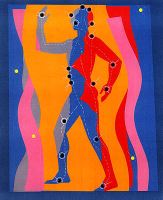 Â For non-specific low back pain, what is the appropriate number of acupoints and how many acupuncture sessions are needed?
 For non-specific low back pain, what is the appropriate number of acupoints and how many acupuncture sessions are needed?
Researchers from the University of Ulster in the UK have documented wide variability.
First, the details.
- Textbooks, surveys, clinical studies, and case reports published in English or Chinese were identified.
- Chinese expert opinions were also included.
- Data on detailed acupuncture treatment regimens for various degrees of low-back pain were tallied.
And, the results.
Chronic non-specific low back pain
- Acupoints
- Clinical studies and surveys (9-11 acupoints)
- Chinese experts (5 acupoints)
- Frequency of treatments: 1-2 up to 5-6 times/week
Acute low back pain
- Acupoints
- Case studies (10 acupoints)
- Clinical studies in Chinese (2 acupoints)
- Frequency of treatment
- Clinical studies in Chinese (6.5 sessions)
- Clinical studies in English (3.5 sessions)
- Case studies (3 sessions)
The bottom line?
The obvious explanation for the variable results is that acupuncture is individualized to meet each patient’s needs. And that might be true.
But it doesn’t explain why, in the case of acute low back pain for example, that Chinese practitioners require more than 6 treatment sessions, while those who publish in English (presumably Western trained) complete treatment in half the time.
It’s possible that there might be differences in training and techniques that lead to these differences. The recent standards for acupuncture established by the World Health Organization might narrow these apparent differences.
This may sound terribly naïve, and extrapolating from just an abstract is risky, but is it possible that using fewer acupoints per session requires more treatment sessions?
2/13/09 18:42 JR